
 |
|
|
Corn
Volume 59 Number 18 Date 11/13/2014 WESTERN BEAN CUTWORM - The 2014 trapping survey documented the smallest flight in the 10-year history of the monitoring program, collecting only 521 moths in 108 traps (five per trap average). Most sites captured no more than 10 moths during the 10-week trapping period ending August 20. The season's highest cumulative count was just 58 moths near Pine River in Waushara County. Levels of this insect have shown a considerable decline since 2010 when pheromone traps collected the state record count of 10,807 moths in 136 traps (79 per trap average). Larval infestations have also been scarce and the western bean cutworm has not been a major pest of concern for most Wisconsin corn producers in the last four years. CORN ROOTWORM - Results of the August survey indicate adult corn rootworm populations decreased from 2013 across the eastern half of the state and increased in portions of western Wisconsin. Average counts in the six eastern and central crop districts (SC, SE, C, EC, NC, NE) were all well below the 0.75 beetle per plant economic threshold at 0.1-0.4 per plant, with the largest population decline from 0.8 to 0.4 beetle per plant observed in the southeast. The average in the northwest was also below-threshold at 0.5 beetle per plant. By contrast, the survey found higher beetle populations than in 2013 in southwest and west-central Wisconsin, although part of the increase in the southwest was due to an exceptionally high count of 11.2 per plant in one Lafayette County field. Excluding this count, the district average would have been equivalent to the 2013 average at 0.6 beetle per plant. Economic populations of 0.75 or more beetles per plant were found in 36 of the 229 fields surveyed this season (16%), as compared to 18% last year and a five-year average of 25%. The statewide average of only 0.4 beetle per plant is the lowest since 2010 and the second lowest in the survey's history. The general reduction in rootworm adults in the last two years suggests management practices such as crop rotation, soil insecticides, rootworm-resistant transgenic corn varieties, and natural controls, including low soil temperatures and heavy rain have recently kept numbers at lower levels. Nevertheless, this insect continues to be the most costly insect threat to corn production in Wisconsin. EUROPEAN CORN BORER - Larval populations declined to an average of just 0.03 borer per plant this fall, tying 1998 as the lowest in the survey's 73-year history. Minor population reductions from 2013 were found in seven of the state's nine agricultural districts, while very slight increases were noted in the west-central and north-central areas. Eighty-four percent of the fields examined (193 of 229) showed no evidence of corn borer infestation. Based on the fall survey results, major change in the nearly decade-long low population trend is not expected for 2015. BLACK CUTWORM - Migrants began arriving in the state by April 13. The first significant flight was registered near Platteville in Grant County from April 29-May 1 and the primary corn cutting window opened in southwestern Wisconsin on May 29. Spring planting delays and late weed control created very favorable outbreak conditions in June, but cutworm problems failed to materialize. Although the cumulative spring count of 1,068 moths in 34 traps indicated a markedly larger migration than last year's flight of 577 moths in 30 traps, economic damage to emerging corn was not observed this season. -- Krista Hamilton, DATCP Entomologist SEED CORN CERTIFICATION - Nine growers in eleven counties participated in seed corn field inspections for export certification in 2014. Samples from 93 fields were tested in the laboratory for the bacterial diseases Stewart's wilt and Goss's wilt. All samples were negative for Stewart's wilt, while 9% (8 of the 93) tested positive for Goss's wilt. Although Canada discontinued its disease testing requirement for imported seed corn from the U.S., other trading partners such as Argentina, Brazil, the European Union, Japan and Mexico still require testing for bacterial wilts and other diseases, including sugar cane mosaic virus, wheat streak mosaic virus, and High Plains virus. All seed corn samples were also checked for these three viruses; no virus was detected this year. -- Anette Phibbs, DATCP Plant Pathologist 
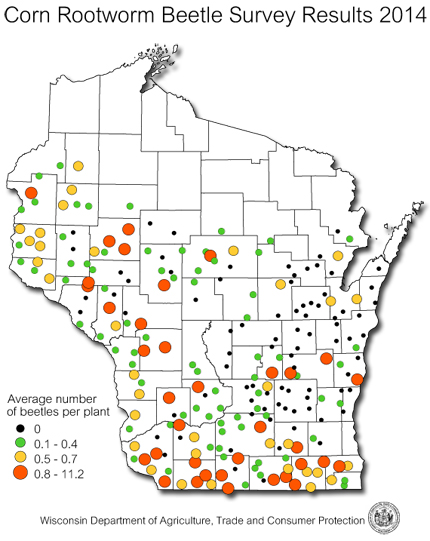
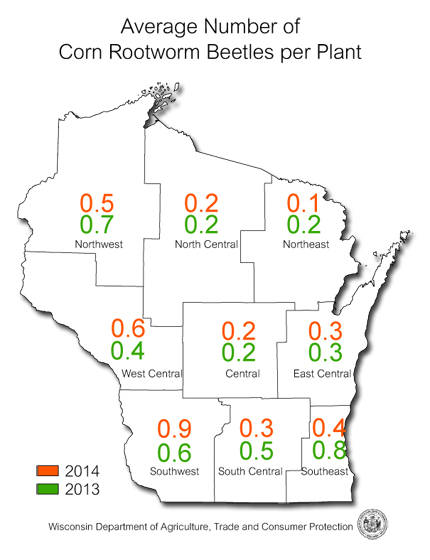
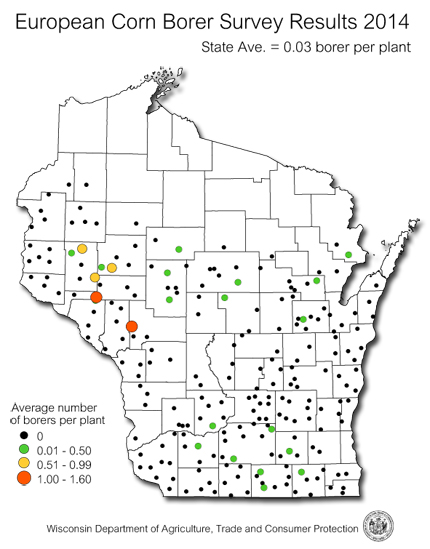
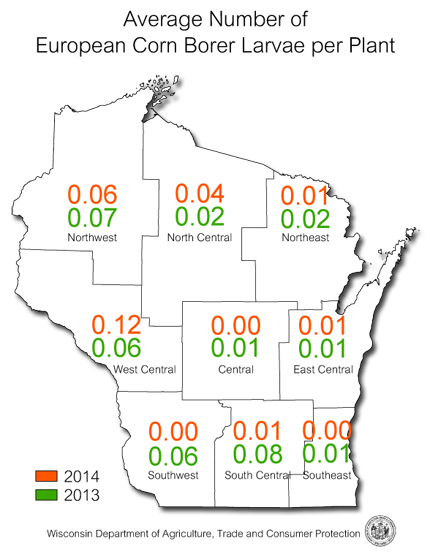
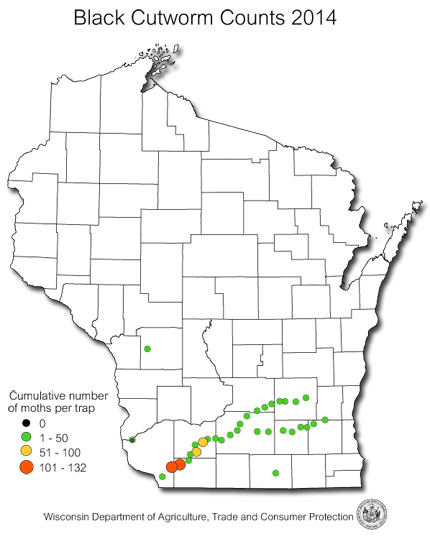
|
|
|